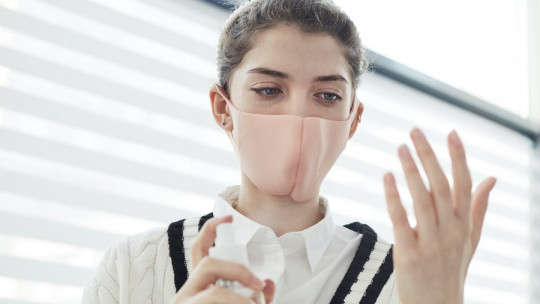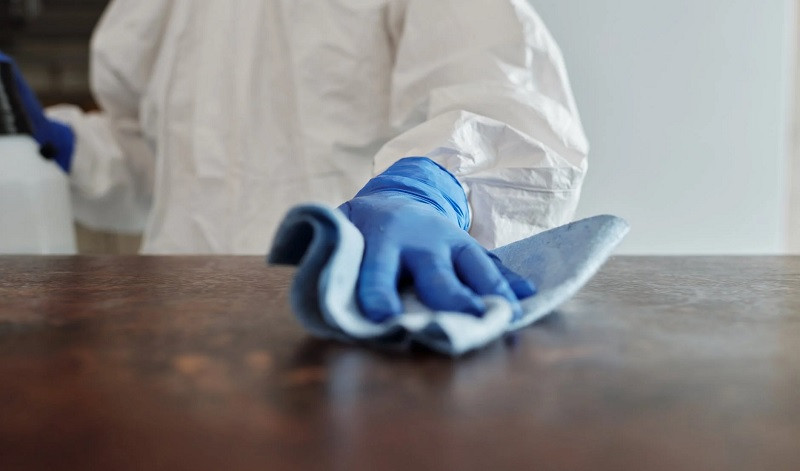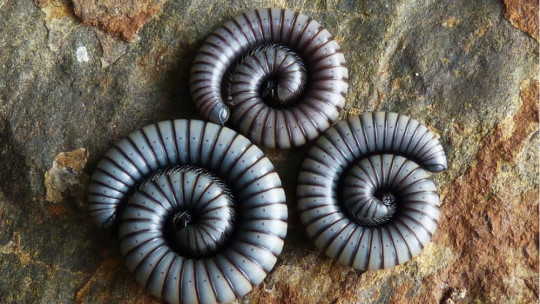
There are people who suffer from a phobia of certain small or even tiny things (for example, bacteria), so they can suffer anxiety when they are in public spaces, which is why they usually always have disinfectant gel or wipes on hand. and in the most serious cases they could avoid leaving the case as much as possible to avoid exposing themselves to that type of situation.
Microphobia is a type of specific phobia known as the irrational and excessive fear of bacteria, parasites and/or small objects and animals, whether visible or not.
In this article we are going to see what microphobia consists of and how this type of specific phobia could affect the daily lives of those who suffer from it. We are also going to discuss some brief guidelines that can be applied from some psychological treatment approaches.
What is microphobia?
Microphobia is a type of specific phobia that is characterized by an excessive and irrational fear or fear of bacteria, parasites and/or very small objects and animals whether visible or not.
In many cases of people who suffered from microphobia, the existence of a constant fear of being infected by some type of bacteria and/or germ through any type of surface (for example, public toilets, tables, etc.) has also been found. that causes these people to continually disinfect themselves with disinfectant gel or wipes, especially in public spaces.
Symptoms
When making a diagnosis of a case of microphobia, it is essential that the clinical professional takes into account the most common overt symptoms that are usually found in those patients who suffer from this type of specific phobia these being the ones we are going to list below:
It is important to mention that To make a diagnosis of microphobia, it is not enough for a person to suffer from one or more of these symptoms but it should be a professional who will evaluate the case exhaustively and, based on the pertinent tests, make the diagnosis in case there is a real case of microphobia, always keeping in mind various factors associated with the patient such as age, family history at the level mental health, whether or not the patient had other pathologies both physically and psychologically, etc.
In addition to the symptoms that we have just seen, which were mostly on a physiological and behavioral level, It is advisable to keep in mind a series of symptoms at a cognitive level that tend to manifest in cases of microphobia and that are important to take into account, these being the ones that will be listed below:
It is important to highlight that the symptoms of microphobia could develop comorbidly with those of other phobias.
Causes
On the other hand, microphobia is the result of a combination of causes among which it is worth highlighting a genetic predisposition to anxiety problems and, above all, the fact of having gone through certain anxiety-producing experiences, so that this state of discomfort is associated with the concept of “microbes”, or “bacteria” , etc.
Classification of microphobia in diagnostic manuals of mental disorders
In the main diagnostic manuals on mental disorders, such as the DSM-5 of the American Psychiatric Association (APA) and the ICD-11 of the World Health Organization (WHO), We could classify microphobia within the category of specific phobias which is one of the most common types of anxiety disorders.
Below we will see the main characteristics of specific phobias in each of the manuals that we have just mentioned and adapted in this case to the possible symptoms of a person with microphobia.
1. Specific phobia in DSM-5
The characteristics that would allow a clinician to diagnose microphobia being a type of specific phobia, according to the DSM-5, they are what we are going to list below:
- Intense anxiety or fear in the presence of organisms, things or objects with a tiny size.
- Fear or anxiety usually arises immediately when faced with tiny organisms or objects.
- That person tends to actively avoid any type of situation where tiny things might be involved.
- The person usually experiences clinically significant discomfort that interferes with their daily life.
- This condition cannot be explained by another illness (e.g., panic disorder).
- Symptoms of fear of tiny objects, things, and organisms should last at least 6 months.

- You may be interested: “Mental health: definition and characteristics according to psychology”
2. Specific phobia in ICD-11
The main characteristics of microphobia, being a type of specific phobia according to ICD-11 would be the following:
- Excessive fear or anxiety that occurs when a person is exposed to tiny organisms or things.
- These symptoms of fear or anxiety are totally disproportionate to the real danger.
- These tiny objects or organisms are often avoided or endured with intense fear or anxiety.
- The symptoms of microphobia just mentioned should last several months.
- Furthermore, these symptoms must be severe enough to cause discomfort and/or deterioration.
Treatment of microphobia
When a person is suffering various difficulties considerably in their daily life due to a possible microphobia or any other type of phobia, such as the phobia of certain animals, the phobia of flying… so avoids being present in certain places or in a wide variety of situations in which exposure to the feared stimulus could occur it would be advisable that you seek help from a mental health professional so that she can help you progressively confront your fear and return to leading a full life.
That is why below we will see some psychological treatments that have proven effective against various types of specific phobias, among which microphobia can be found.
1. Cognitive therapy
One of the psychological treatments that has been most used to address cases of microphobia is cognitive therapy because these patients usually present a series of cognitive symptoms related to excessive fear of tiny objects or organisms, so in this type of case the therapist will be in charge of identifying what those distorted thoughts would be with the aim of analyzing them correctly. jointly with the patient so that they can be aware that they are not rational.
Once those irrational thoughts related to microphobia have been identified and analyzed, The therapist will help the patient replace them with other types of thoughts and ideas that are more in line with reality and thus be able to help you on the path to exposure to feared stimuli without suffering excessive fear or anxiety.
Within this type of therapy, it is worth highlighting a widely used technique to help identify those irrational thoughts and beliefs (in this case related to microphobia) in order to modify them through its rational questioning with a Socratic dialogue or debate and this technique has been commonly called “cognitive restructuring.”
- You may be interested: “Cognitive-Behavioral Therapy: what is it and what principles is it based on?”
2. Behavioral therapy
Another psychological therapy that has also proven effective against specific phobias such as microphobia, is behavioral therapy, being a therapeutic modality that may increase benefits when combined with cognitive therapy (cognitive behavioral therapy).
In behavioral therapy, which is based on the theories of behavioral learning against microphobia or any other type of phobia, it can begin with a relaxation training technique, which is composed of progressive muscle relaxation exercises or autogenic training, focused breathing exercises and also exercises aimed at managing your attention.
Another widely used technique for the treatment of microphobia is the exposure technique against the feared stimulus (tiny objects or organisms), so the patient must gradually expose himself to these tiny objects or organisms and, in order for him to do so more effectively, he must have learned during the therapy sessions to control his thoughts and emotions while He carries out these exposures to the stimulus he fears.








